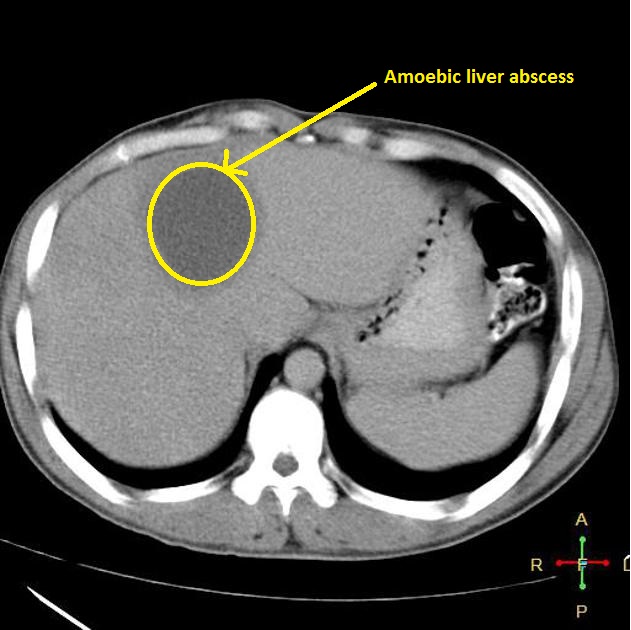Amoebic liver abscess CT
|
Amoebic liver abscess Microchapters |
|
Diagnosis |
|
Treatment |
|
Case Studies |
|
Amoebic liver abscess CT On the Web |
|
American Roentgen Ray Society Images of Amoebic liver abscess CT |
|
Risk calculators and risk factors for Amoebic liver abscess CT |
Editor-In-Chief: C. Michael Gibson, M.S., M.D. [1];Associate Editor(s)-in-Chief: Yamuna Kondapally, M.B.B.S[2]
Overview
CT scan findings of amoebic liver abscess include shape of abscess, varying sizes ranging from 4 cm to 12 cm, well defined lesion with attenuation values indicating the presence of complex fluid, wall enhancement, peripheral zone of edema with wall thickness around 3-15 mm, the central abscess cavity with septations and/or fluid-debris levels, and gas in the abscess if associated with hepatobronchial fistula or a hepatocolic fistula.[1][2]
CT
CT scan findings of amoebic liver abscess include:[1][2]
- Shape of abscess (mostly round in shape)
- Vary in size ranging from 4 cm to 12 cm.
- Well defined lesion with attenuation values indicating the presence of complex fluid
- Wall enhancement
- Peripheral zone of edema with wall thickness around 3-15mm
- The central abscess cavity with septations and/or fluid-debris levels
- Gas in the abscess if associated with hepatobronchial fistula or a hepatocolic fistula
References
- ↑ 1.0 1.1 https://radiopaedia.org/articles/amoebic-hepatic-abscess Accessed on February 7, 2017
- ↑ 2.0 2.1 Ximénez C, Morán P, Rojas L, Valadez A, Gómez A, Ramiro M; et al. (2011). "Novelties on amoebiasis: a neglected tropical disease". J Glob Infect Dis. 3 (2): 166–74. doi:10.4103/0974-777X.81695. PMC 3125031. PMID 21731305.
